Quit Maize Farming to Grow Marigold, 520 Farmer Families’ Income Increase Five Times
In a span of 12 years, these farmer families of Kellarh Valley in Jammu and Kashmir found a new cash crop — marigold that has increased their income manifold.

Around 520 families of picturesque Kellarh Valley in Jammu and Kashmir’s hilly Bhaderwah town have gradually quit maize farming in a span of 12 years and turned to profitable marigold cultivation. According to the villagers, their new cash crop is giving them an income five times more than what they used to get from the traditional maize crop.
“Maize crop grown over one Kanal of land would give us an income of around Rs 5,000-6,000 whereas our farmers are now earning Rs 25,000 to 30,000 from the sale of 6-8 quintals of flowers grown over the same land area,” says Mohammad Iqbal, one of the progressive farmers of the Kellarh Valley in Doda District.
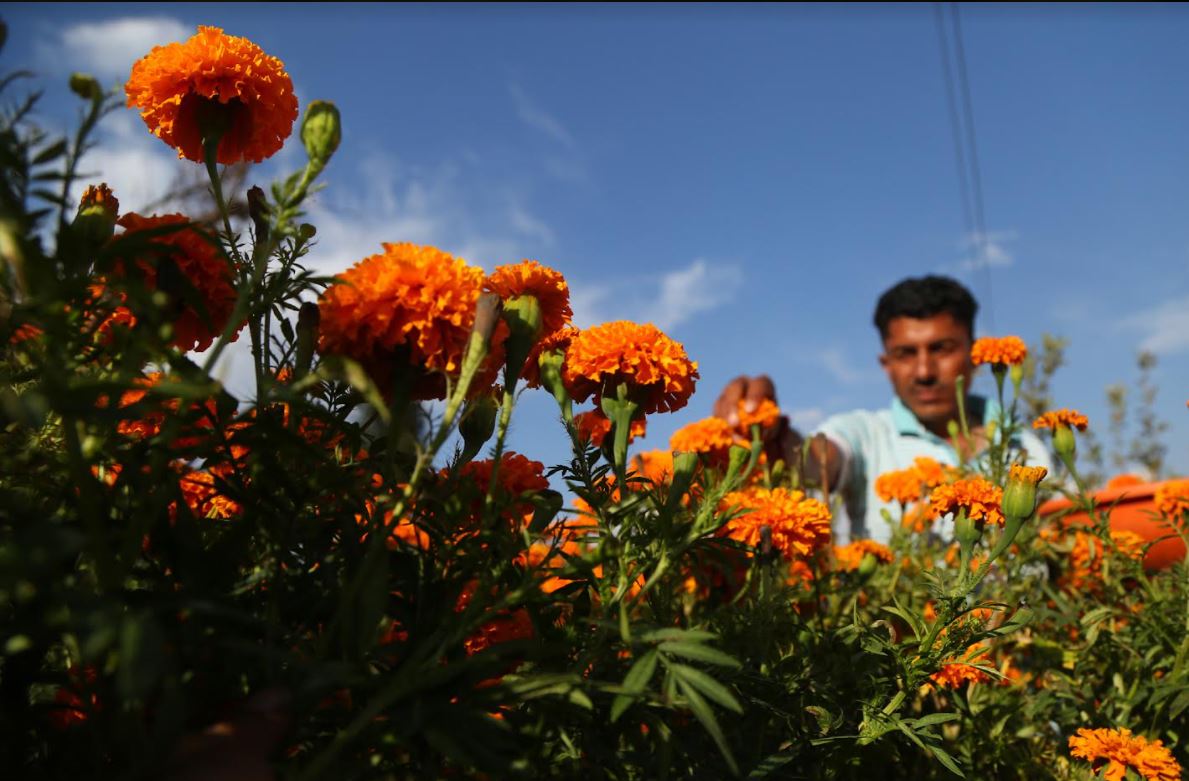
Iqbal, who grows marigold crop along with apples, garlic and other cash crops over an area of around 10 Kanals, and earns in lakhs, was recently awarded by Rameswar Teli, the Union Minister of State for Labour and Employment, Petroleum and Natural Gas, when the latter was in the town to attend a “public outreach programme”.
The marigold crop was brought to the scenic Kellarh Village of Bhaderwah town in the year 2009 by then created Bhaderwah Development Authority (BDA).
Kashmir Administrative Services (KAS) officer, Talat Parvez Rohella, Commissioner Secretary, Hospitality and Protocol Department, Jammu and Kashmir Government, who’s credited for introducing the flower crop in the region when he was posted as CEO Bhaderwah Development Authority (BDA), says, “Way back in 2009, we distributed Nasturtium flower seeds to the farmers of Kellarh under the Rashtriya Krishi Vikas Yojana (RKVY).”
The government programme RKVY has now been renamed to ‘Remunerative Approach for Agriculture and Allied Sector Rejuvenation’.
As Nasturtium was exported to Holland then, the senior bureaucrat says, farmers of Bhaderwah region immensely benefited from the cultivation of the new cash crop.
“After the success of the Nasturtium, we involved the Panchayat members of Kellarh and sensitised through them the village farmers about the possibility of growing ‘profitable’ marigold crop over traditional maize crop under the RKVY scheme,” Rohella tells TheBetterIndia.
Rohella claimed the RKVY scheme provides for a subsidy of Rs 13,000 per four kanals of land “and this was a great deal for the Kellarh farmers who won’t get any subsidy for growing traditional crops until then”.
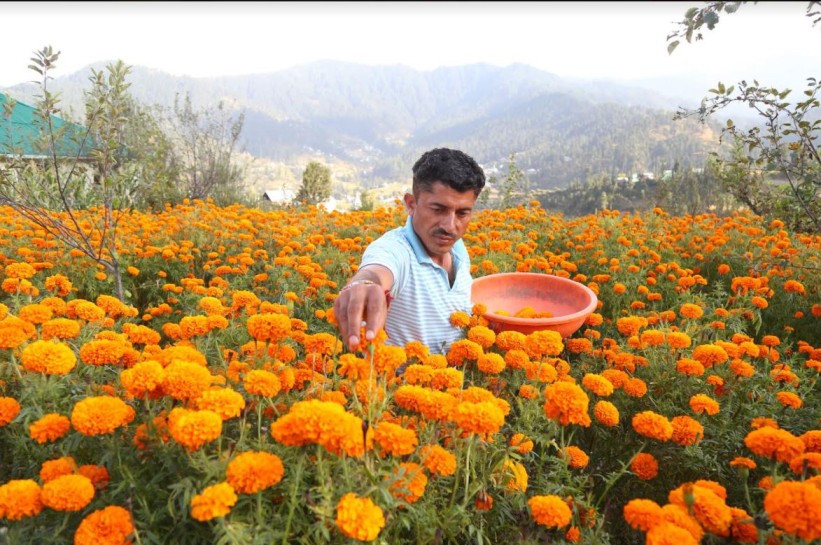
“However, the year we started, we were able to convince only 10-20 farmers. But I’m glad that almost all the farmers have now been growing marigold and are earning a better income,” the J&K government’s Commissioner Secretary ranked officer, Talat Parvez Rohella says.
Asked where he procured the seeds from, the senior KAS officer says, “For this, we involved Malerkotla, Punjab farmers, who were growing and exporting the marigold flower, to provide the seeds to J&K farmers.”
“Our farmers hugely benefited from this deal as they were provided with the seeds ‘free-of-cost’ and a ‘buy back’ of the seeds from J&K farmers on crop maturity was also promised by the Punjab farmers,” he says, adding, “So this entire business increased our farmers’ income manifolds.”
A Flourishing Biz

Hind Bhushan, 52, a prominent farmer of Gajoth Village in Kellarh Valley, who is also the member of J&K Kissan Advisory Board, says that he was among a few people who dared in 2009 itself to shift from growing conventional maize crops to cultivating flowers.
“The shift wasn’t easy to digest for many farmers in our village,” Bhushan says, as according to him, he would often face taunts from other farmers of his village for “destroying my fields by choosing the flower crop over maize.”
“But I didn’t pay much heed to what people of our village would say as I had been to several other states by then, and had seen how the farmers were earning a better living only through better farming practices,” Bhushan says.
He says that until 2013-14, Gajoth was not connected with the road and hence the farmers had to trek miles on foot by carrying the flower crop on their shoulders to load it in busses from 8-km far Bhalla Village and then sell it in Jammu and Katra markets themselves.
“But after the construction of the 8-km-long PMGSY road from Bhalla to Gajoth, the business of marigold flower growers in our village flourished,” he says, adding, “Post 2014, almost all the farmers took up marigold cultivation and started earning in lakhs.”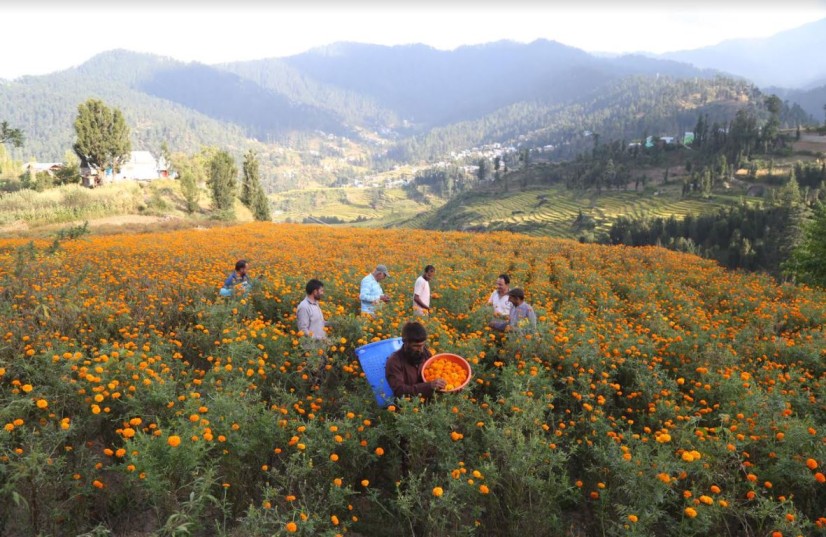
Gajoth Sarpanch Devinder Kotwal, 49, says that there are 2,600 plus souls in his village and the average land holding capacity of the Gajoth farmers is in between 5-10 Kanals of land. “Today, almost all of them are growing marigolds,” he says.
In between February and March, he says, the flower seeds are sown in the nurseries. The flower saplings are sown in the fields in March and by the first week of June, the flowers start blooming.
“From June to October, the farmers harvest and sell their produce to Jammu, Kathua and Punjab traders,” he says.
In Kellarh Valley, Kotwal says, farmers sell on average 200-300 quintals of the flowers every day during the peak season. Only in Gajoth Village, he says, the sale during the peak period reaches 100 quintals per day.
According to him, different Kellarh farmers have made separate self-help groups and they collectively sell the flower crop to around 30-35 flower traders of Jammu, Kathua and Punjab.
“After plucking the fresh flowers from their fields, our farmers only have to pack their yield in small boxes,” the village Sarpanch says. Transport and the sale thereafter, he says, is looked after by the traders themselves.
“A fixed amount from the sale is deducted and the rest of the amount is paid directly to the farmers in their account,” the Gajoth Sarpanch adds. The average rate of one kilogram of the marigold flower is Rs 30-Rs 35, as per the Kellarh farmers.
Kotwal claims several farmers of his village have been earning in lakhs by shifting to marigold cultivation.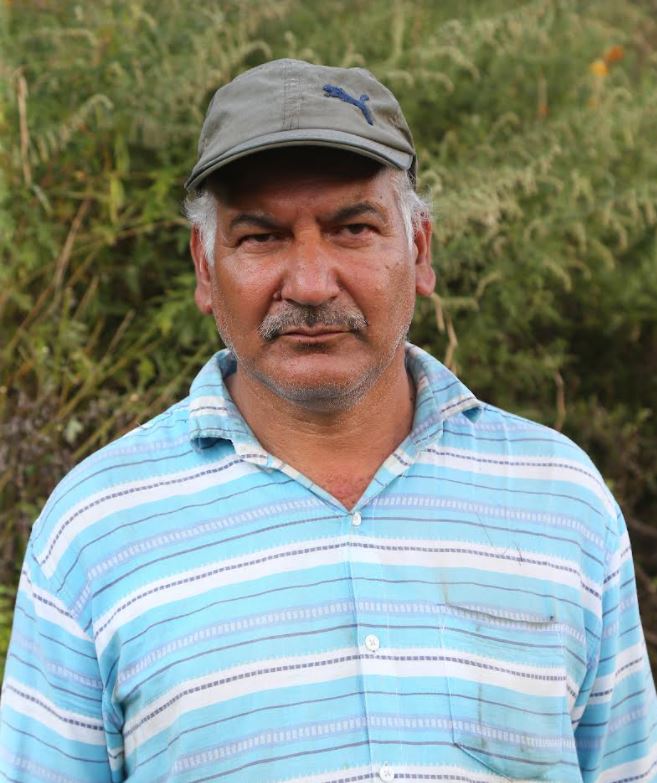
Devan Chand, 54, son of Hem Raj of Gajoth is one among them. Chand owns 10 Kanals of land and has been growing marigold crops along with other cash crops like garlic and apples since 2009.
“Until 2009, I was making in between Rs 50,000 to Rs 60,000 by growing the traditional maize crop over 10 Kanals of my land. But my average income increased to almost Rs 2 lakh-Rs 3 lakh post 2009,” he says.
“In one of the seasons, I earned a whooping income of Rs 13 lakh from the sale of flowers and other cash crops,” Chand says.
Sanjeet Kumar, 43, son of Hem Raj is another farmer of Kharua Village in Kellarh Valley, who claims, “During the first wave of the COVID pandemic, I sold the flower crop at the rate of Rs 60 per kg and earned profits in lakhs.”
Hind Bhushan, the Kissan Advisory Board member, claims the average income of almost all the marigold farmers in his village has increased manifold. He adds, “It has made our lives better.”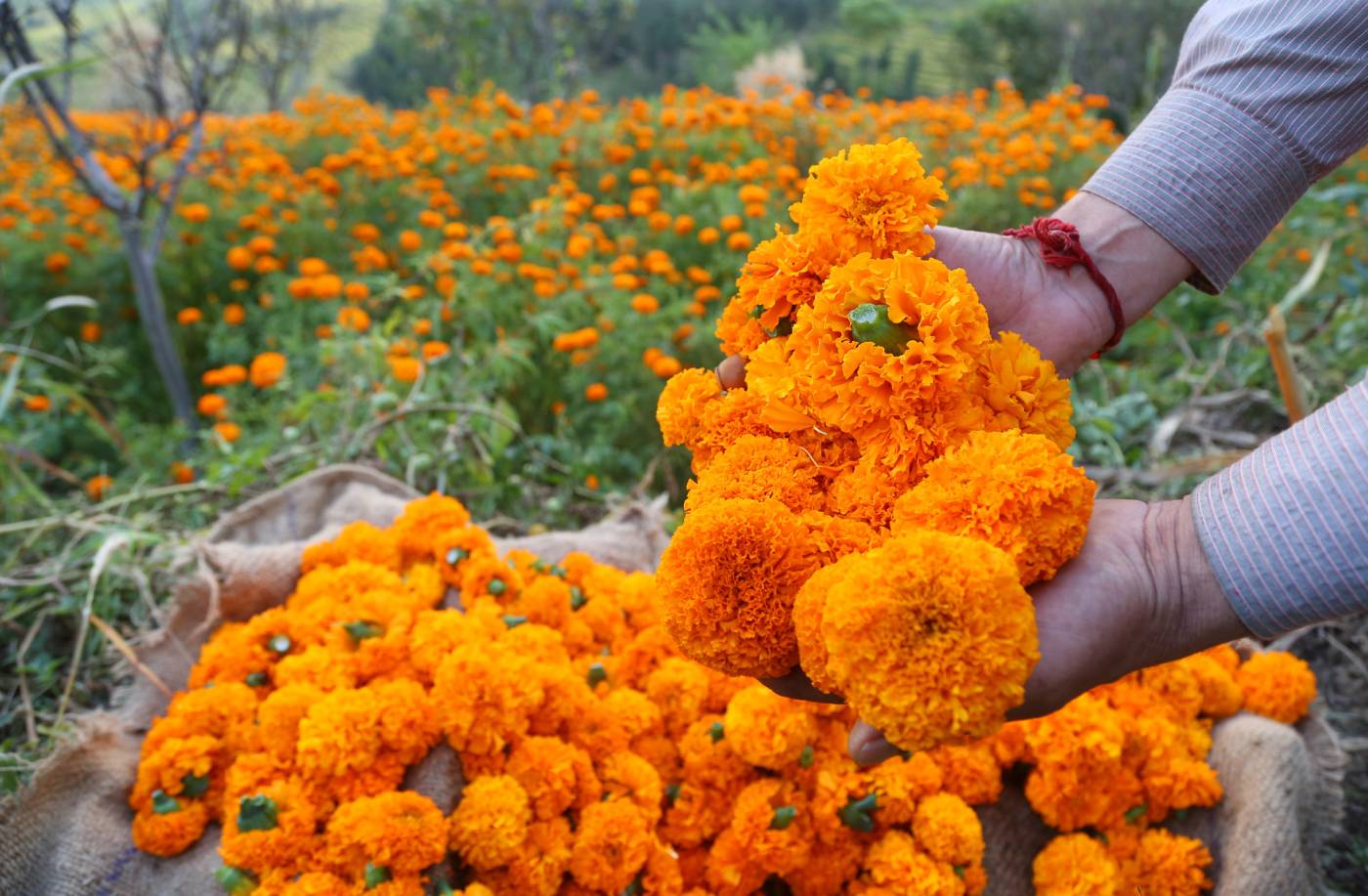
(Edited by Yoshita Rao)
This story made me
- 97
- 121
- 89
- 167
Tell Us More
We bring stories straight from the heart of India, to inspire millions and create a wave of impact. Our positive movement is growing bigger everyday, and we would love for you to join it.
Please contribute whatever you can, every little penny helps our team in bringing you more stories that support dreams and spread hope.



















